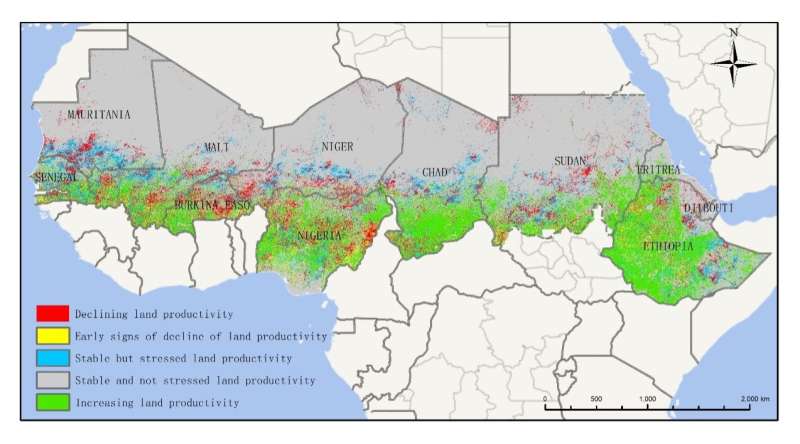Chinese scientists help Africa combat land degradation

Chinese scientists released an online tool, the Great Green Wall Big Data Facilitator, to help African countries combat increasingly severe land degradation on June 16, the 28th World Day to Combat Desertification & Drought.
Land degradation is one of the most significant global ecological and environmental challenges. Africa is particularly vulnerable to land degradation and desertification, and it is the most severely affected region. "Up to 65 percent of productive land is degraded, while desertification affects 45 percent of Africa's land area," according to a report of FAO in 2021.
In the United Nations 2030 Agenda for Sustainable Development (the UN 2030 Agenda), UN has described 17 Sustainable Development Goals (SDGs), among which SDG 15 proposes a prospect of "By 2030, combat desertification, restore degraded land and soil, including land affected by desertification, drought, and floods, and strive to achieve a land degradation-neutral world."
To address the data gap in the global land degradation monitoring, a group of Chinese scientists led by Prof. Li Xiaosong from the International Research Center of Big Data for Sustainable Development Goals (CBAS) and the Aerospace Information Research Institute (AIR), Chinese Academy of Sciences (CAS), in partnership with Beijing Normal University, Computer Network Information Center of CAS and Institute of Software of CAS, have developed a 30-meter Land Productivity Dynamics (LPD) calculation tool.
As the world's first 30-meter LPD calculation tool, it can realize the calculation of a 30-meter LPD within the specified global spatial range as well as time period, thereby providing important data support for global land degradation monitoring.
The calculation is built on the SDG Big Data Platform supported by CBAS, which was launched in Beijing in September 2021 to facilitate the implementation of the UN 2030 Agenda.
The "Great Green Wall" is an African-led initiative launched in 2007 with the goal to restore the continent's degraded landscapes and transform millions of lives in the Sahel. To support the development of "Great Green Wall," Chinese scientists use this tool to produce a 30-meter spatial resolution LPD product which covers an area of 9.34 million square kilometers in 11 member countries of the Pan Africa Agency of the Great Green Wall (PAGGW).
The spatiotemporal analysis result shows that from 2013 to 2020, for the PAGGW countries, the land with increasing productivity accounted for 16.25%, and the area with decreasing productivity accounted for 7.36% of the total area.
For the Sahel, the main target area of the Great Green Wall, the land with increasing productivity accounted for 8.45%, while the land with decreasing productivity accounting for 9.24% of the total area, which is not a promising prospect for the development of the Great Green Wall.
The LPD product presented on the Great Green Wall Big Data Facilitator can be used to track the progress of LDN of the target areas. In addition, the platform also provides a knowledge bank about prevention and control of land degradation, which is obtained from successful practices of China's efforts to combat land degradation in Northern China.
Ibrahim Thiaw, Deputy Secretary-General of the U.N. and Executive Secretary of United Nations Convention to Combat Desertification (UNCCD) applauded the launch of this online tool, saying that the results have the potential to facilitate the Great Green Wall of Africa in the future.Image: Desert greenery
No comments:
Post a Comment